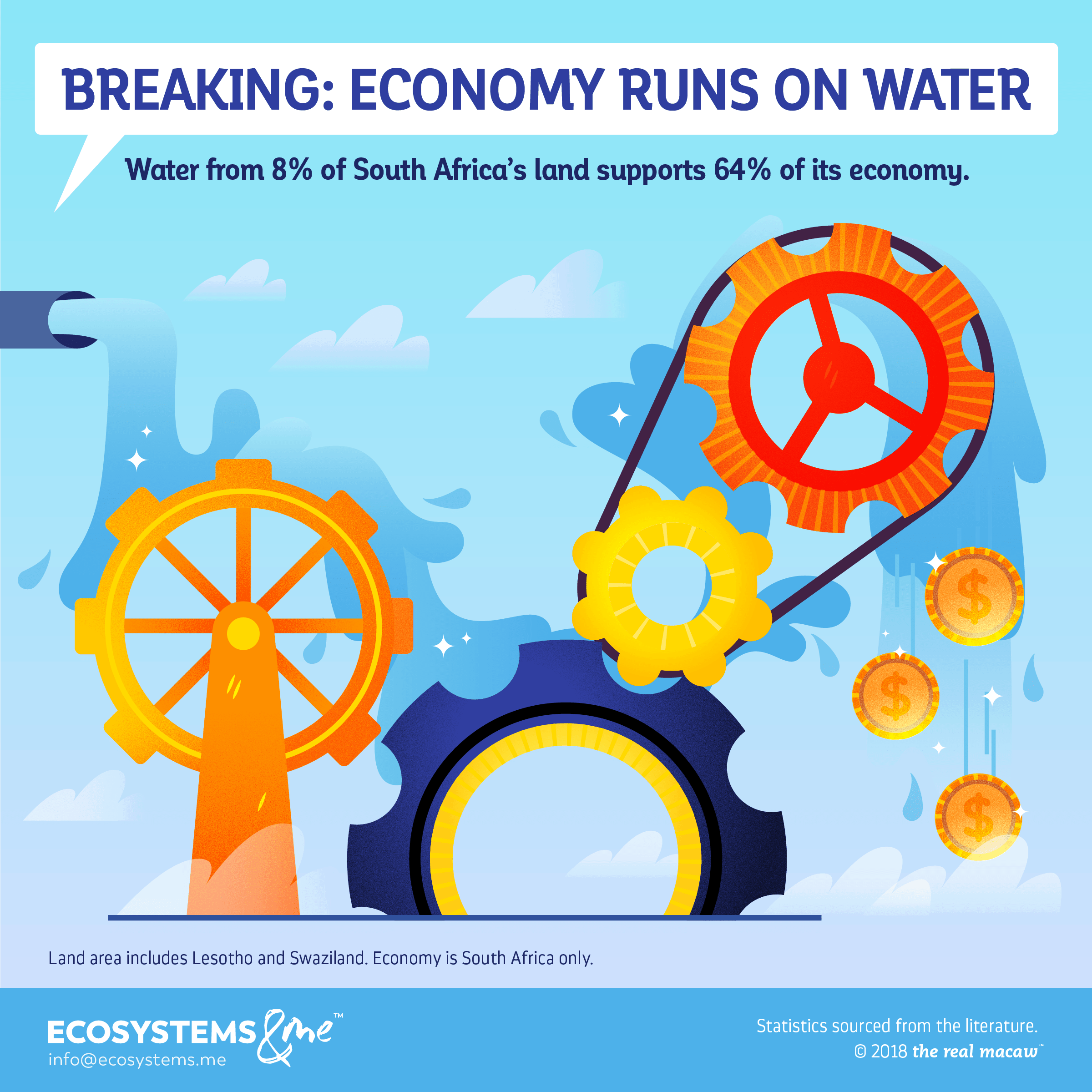
We have to admit we were a bit confounded by this one when we first saw it. Water supports 64% of South Africa’s economy? Aren’t there many factors impacting the South African economy? And the main sources of freshwater supplies in South Africa are rivers, dams, groundwater, and rainfall (warning: 200 page PDF). How are these 8% of land area, and how are they related to the economy?
Water supports 64% of South Africa’s economy.
Well, turns out it’s not all of South Africa’s water resources – just the ones that punch above their weight. That 8% of land hosts ‘strategic water source areas’: areas that supply a large amount of water to key regions, like urban centres and economic hubs.
Putting the ‘strategic’ in ‘strategic water source areas’
South Africa is a dry country. Even though it technically has more renewable water resources than nearby countries like Botswana and Namibia, water availability is much lower per person, thanks to its larger population. Cape Town has been suffering from a water crisis since 2015, due to drought (caused by El Nino and climate change) and population growth in the city, which led to higher water demand.
A few small areas of rivers, wetlands, and other surface water systems supply a disproportionate amount of water.
So it’s especially important that a few small areas supply a lot of water. They are rivers, wetlands, and other surface systems that are refilled by rainfall. And we should probably take note, because in general, South Africa’s water sources are not doing well: many ecosystems are threatened, degraded, or endangered, and most are unprotected.
Many of the strategic areas are near the coast, at the headwaters of rivers that run down to the ocean. Some of the main ones are near Cape Town and Durban. A few are far inland. And some are in Lesotho and Swaziland, but drain through South Africa’s urban centres. (After all, ecosystems don’t care about national borders.)
Connecting water to South Africa’s economy
This is actually quite easy. Mapping the watersheds of the strategic areas shows which urban regions, and how much of the population, they support. Combine that with the economic output of the urban regions, compare that to national economic output, and voila! Strategic water source areas support 64% of South Africa’s economy.
South Africa’s economy needs water to run.
It’s worth noting that this doesn’t separate the different sectors of the economy. Doing so could change the numbers, since water supply could barely affect some sectors but seriously affect others, such as agriculture. So the relative size of each sector could also be important – but even then, everyone needs water to live. And in this case, the economy also needs water to run.
